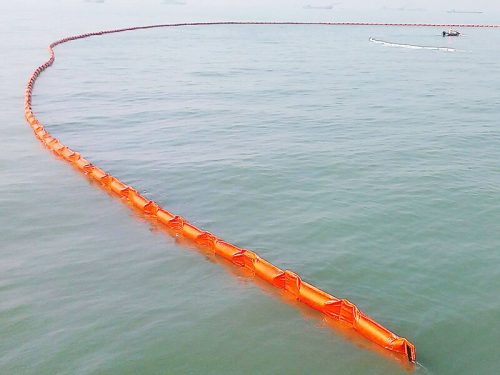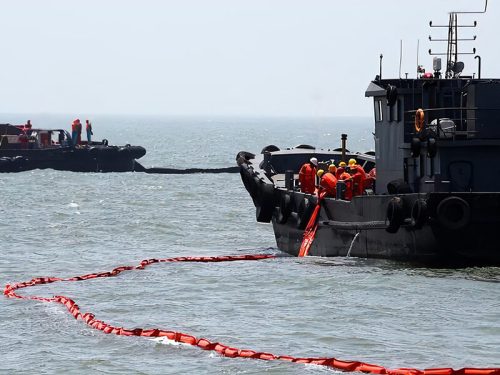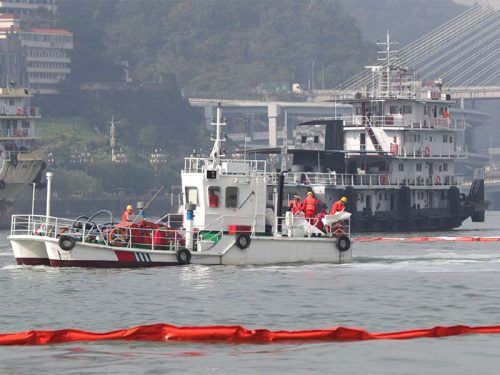Precautions for towing oil boom at sea
Date:2023-05-09
Oil booms are one of the main equipment to prevent the spread of oil spills at sea. Strengthening the use of the oil boom can better assist the recovery of sea oil spills and the cleaning of the marine environment. The following are the matters needing attention in towing the oil boom
- During the process of towing the oil boom at sea, communication between the main towing vessel and the auxiliary towing vessel must be clear, and the auxiliary towing vessel should follow the command of the main towing vessel in order to coordinate the operation of the vessels and complete the oil boom operation.

2. Maintain a safe lateral distance between the two vessels to prevent collisions between the main and auxiliary towing vessels due to a narrow distance, or excessive lateral distance causing the oil boom to be subjected to too much force and damage. For example, when towing a 200-meter-long oil boom, the lateral distance between the two vessels should be controlled between 100 to 130 ITI. The lateral distance between the two vessels is closely related to the towing speed. As the towing speed increases, the lateral distance decreases, and as the towing speed decreases, the lateral distance increases. Additionally, the sea conditions and wind flow also have a certain impact on the lateral distance between the two vessels.

3. The maximum speed for towing the oil boom should not exceed 3 knots. In the process of surrounding the oil, a slower towing speed is better. It is best to stabilize the vessel to control the spilled oil within a certain range, making it easier to recover the oil and prevent oil pollution from spreading. When the towing speed is not well controlled, factors such as wind, currents, and surges can easily cause damage to the oil boom, which can affect the effectiveness of the operation and even cause the entire oil cleanup to fail. Therefore, the towing speed must be carefully controlled during the operation of towing the oil boom.

4. The ocean current is constantly changing, so during the operation of towing the oil boom, the vessel’s heading will change constantly with the shifting of the current. The turning process between the two towing vessels is completed in several steps, and the steps of both vessels must be consistent. One vessel will act as the center while the other vessel turns in a large circle, and the turning angle should not exceed 20 degrees each time. If the turn is too fast, both vessels may be put in danger, and the oil boom may be damaged due to excessive impact force.
5. During the process of towing the oil boom, if the sea conditions become severe, the towing should be stopped promptly, and the towing should be changed to a single towing. This is because when there are large surges, the oil boom cannot effectively contain the oil, and it may also be seriously damaged. At this time, the main towing vessel should tow the oil boom alone, and when the sea conditions improve, the towing can be resumed to complete the oil cleanup operation.
Next: New delivery of a batch of PE floats
RELATED
- What affects the performance of ship launching airbags?
- A batch of DD Fenders Successfully delivered to Europe
- New batch of cylindrical fenders were delivered in advance
- What kind of rubber fenders are used on tugboats?
- Malta – supply and installation of D-shaped rubber fenders
- D0.6m ship launching airbags were successfully delivery
- What are the methods of salvaging shipwrecks?
- Belgium Tender – Yokohama Fenders and pallets of mooring in Zeebrugge

